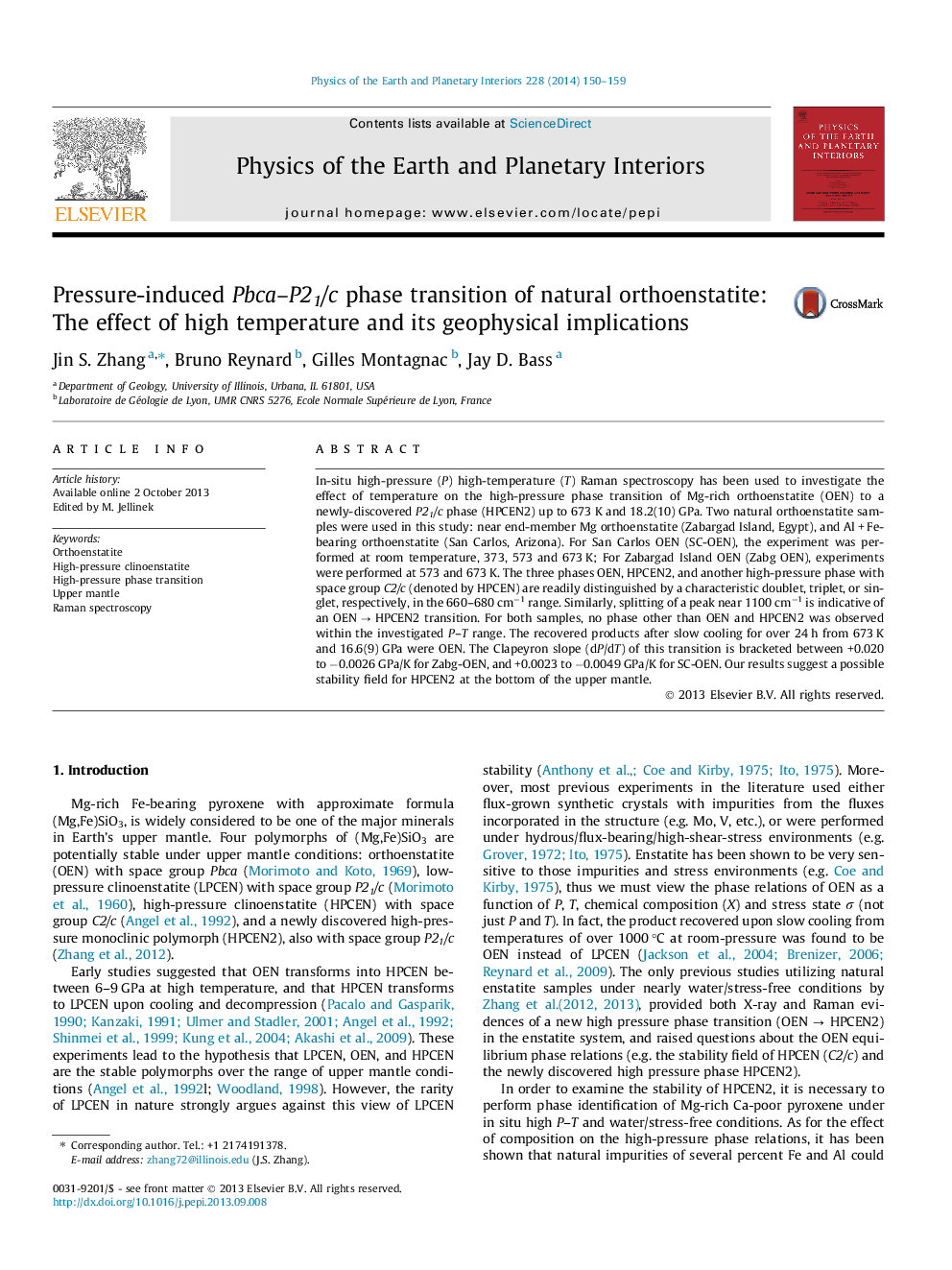| Article ID | Journal | Published Year | Pages | File Type |
|---|---|---|---|---|
| 4741587 | Physics of the Earth and Planetary Interiors | 2014 | 10 Pages |
Abstract
In-situ high-pressure (P) high-temperature (T) Raman spectroscopy has been used to investigate the effect of temperature on the high-pressure phase transition of Mg-rich orthoenstatite (OEN) to a newly-discovered P21/c phase (HPCEN2) up to 673 K and 18.2(10) GPa. Two natural orthoenstatite samples were used in this study: near end-member Mg orthoenstatite (Zabargad Island, Egypt), and Al + Fe-bearing orthoenstatite (San Carlos, Arizona). For San Carlos OEN (SC-OEN), the experiment was performed at room temperature, 373, 573 and 673 K; For Zabargad Island OEN (Zabg OEN), experiments were performed at 573 and 673 K. The three phases OEN, HPCEN2, and another high-pressure phase with space group C2/c (denoted by HPCEN) are readily distinguished by a characteristic doublet, triplet, or singlet, respectively, in the 660-680 cmâ1 range. Similarly, splitting of a peak near 1100 cmâ1 is indicative of an OEN â HPCEN2 transition. For both samples, no phase other than OEN and HPCEN2 was observed within the investigated P-T range. The recovered products after slow cooling for over 24 h from 673 K and 16.6(9) GPa were OEN. The Clapeyron slope (dP/dT) of this transition is bracketed between +0.020 to â0.0026 GPa/K for Zabg-OEN, and +0.0023 to â0.0049 GPa/K for SC-OEN. Our results suggest a possible stability field for HPCEN2 at the bottom of the upper mantle.
Related Topics
Physical Sciences and Engineering
Earth and Planetary Sciences
Geophysics
Authors
Jin S. Zhang, Bruno Reynard, Gilles Montagnac, Jay D. Bass,
